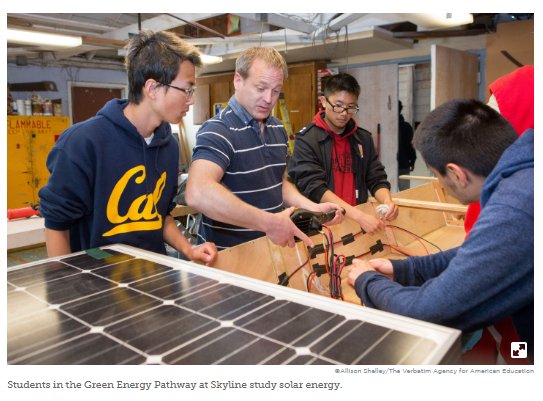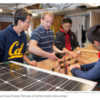“Young people used to follow a path right out of school to the factory with just a little bit of job training, [but] those jobs are not there anymore,” said Neil Ridley, director of the State Initiative at Georgetown University’s Center for Education and the Workforce. “High school shouldn’t be seen as just a pipeline anymore; it’s a building block.”
Sprawled across 65 sun-drenched acres, Skyline High School is an anomaly in the relatively affluent and white neighborhood where it resides. Over the last few years, the school has rapidly diversified thanks to the district’s open enrollment policy, and today 31 percent of its 1,800 students are black, 40 percent are Latino, and 14 percent are Asian. More than 75 percent of the student body qualifies for free or reduced price lunch.
Twenty-five years ago, Skyline launched its first career and technical education program, then called the Education Academy, with support from a grant. Following trends of CTE programs nationally, the program shifted and evolved over the years in an effort to serve the increasingly diverse student body—and give every student a chance for success after high school.
Today, the school uses Linked Learning—a curriculum that emphasizes rigorous academics paired with work-based learning experiences—and mandates that every student in the school to enroll in one of four academies: Computer Science and Technology, Green Energy, Community Health and Education, or Visual and Performing Arts. In addition to required core academic classes, students explore careers within their industry theme and receive college credit for passing courses taught by community college instructors.
The goal is to provide students with meaningful, cross-disciplinary academic opportunities that connect to real careers, according to Justin Anderson, an assistant principal at Skyline and an administrator in the Computer Science and Technology Pathway. Computer Science and Technology seniors create documentary films on issues affecting their communities, such as gang violence, drug abuse, and homelessness, for example, and share them at a film festival at a local theater.
To read more of Andrew Simmons' article, please click here.



Comments (0)